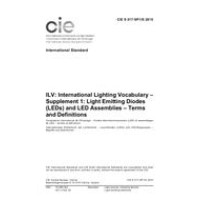METHODS TO QUANTIFY THE EFFECT OF LIGHT EXPOSURE IN HUMANS AND THEIR PRACTICAL APPLICATION (OP46, 329-339)
- Secure PDF Files
- Conference Proceeding by Commission Internationale de L'Ecl
- Category: CIE
$15.90
$8.00
 PDF
PDF
All of our standards document are available in PDF (Portable Document Format), an electronic, downloadable format.You will be able to download the file in your account downloads.
 Multi-User Access
Multi-User Access
After purchasing, you have the ability to assign each license to a specific user.
 Printable
Printable
At any time, you are permitted to make printed copies for your and your members' reference use.





